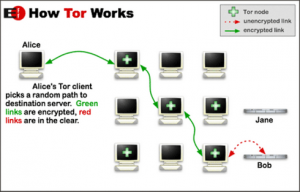Online anonymityHow to stay anonymous online
Anonymity networks protect people living under repressive regimes from surveillance of their Internet use. But the recent discovery of vulnerabilities in the most popular of these networks — Tor — has prompted computer scientists to try to come up with more secure anonymity schemes. These scientists have developed a new anonymity scheme that provides strong security guarantees but uses bandwidth much more efficiently than its predecessors, making it possible for network to protect users’ anonymity if all but one of its servers are compromised.

Even Tor appears to have vulnerabilities // Source: theconversation.com
Anonymity networks protect people living under repressive regimes from surveillance of their Internet use. But the recent discovery of vulnerabilities in the most popular of these networks — Tor — has prompted computer scientists to try to come up with more secure anonymity schemes. At the Privacy Enhancing Technologies Symposium in July, researchers at MIT’s Computer Science and Artificial Intelligence Laboratory and the École Polytechnique Fédérale de Lausanne will present a new anonymity scheme that provides strong security guarantees but uses bandwidth much more efficiently than its predecessors. In experiments, the researchers’ system required only one-tenth as much time as existing systems to transfer a large file between anonymous users.
“The initial use case that we thought of was to do anonymous file-sharing, where the receiving end and sending end don’t know each other,” says Albert Kwon, a graduate student in electrical engineering and computer science and first author on the new paper. “The reason is that things like honeypotting” — in which spies offer services through an anonymity network in order to entrap its users — “are a real issue. But we also studied applications in microblogging, something like Twitter, where you want to anonymously broadcast your messages to everyone.”
The system devised by Kwon and his coauthors — his advisor, Srini Devadas, the Edwin Sibley Webster Professor of Electrical Engineering and Computer Science at MIT; David Lazar, also a graduate student in electrical engineering and computer science; and Bryan Ford SM ’02 PhD ’08, an associate professor of computer and communication sciences at the École Polytechnique Fédérale de Lausanne — employs several existing cryptographic techniques but combines them in a novel manner.
Shell game
The heart of the system is a series of servers called a mixnet. Each server permutes the order in which it receives messages before passing them on to the next. If, for instance, messages from senders Alice, Bob, and Carol reach the first server in the order A, B, C, that server would send them to the second server in a different order — say, C, B, A. The second server would permute them before sending them to the third, and so on.
An adversary that had tracked the messages’ points of origin would have no idea which was which by the time they exited the last server. It’s this reshuffling of the messages that gives the new system its name: Riffle.
